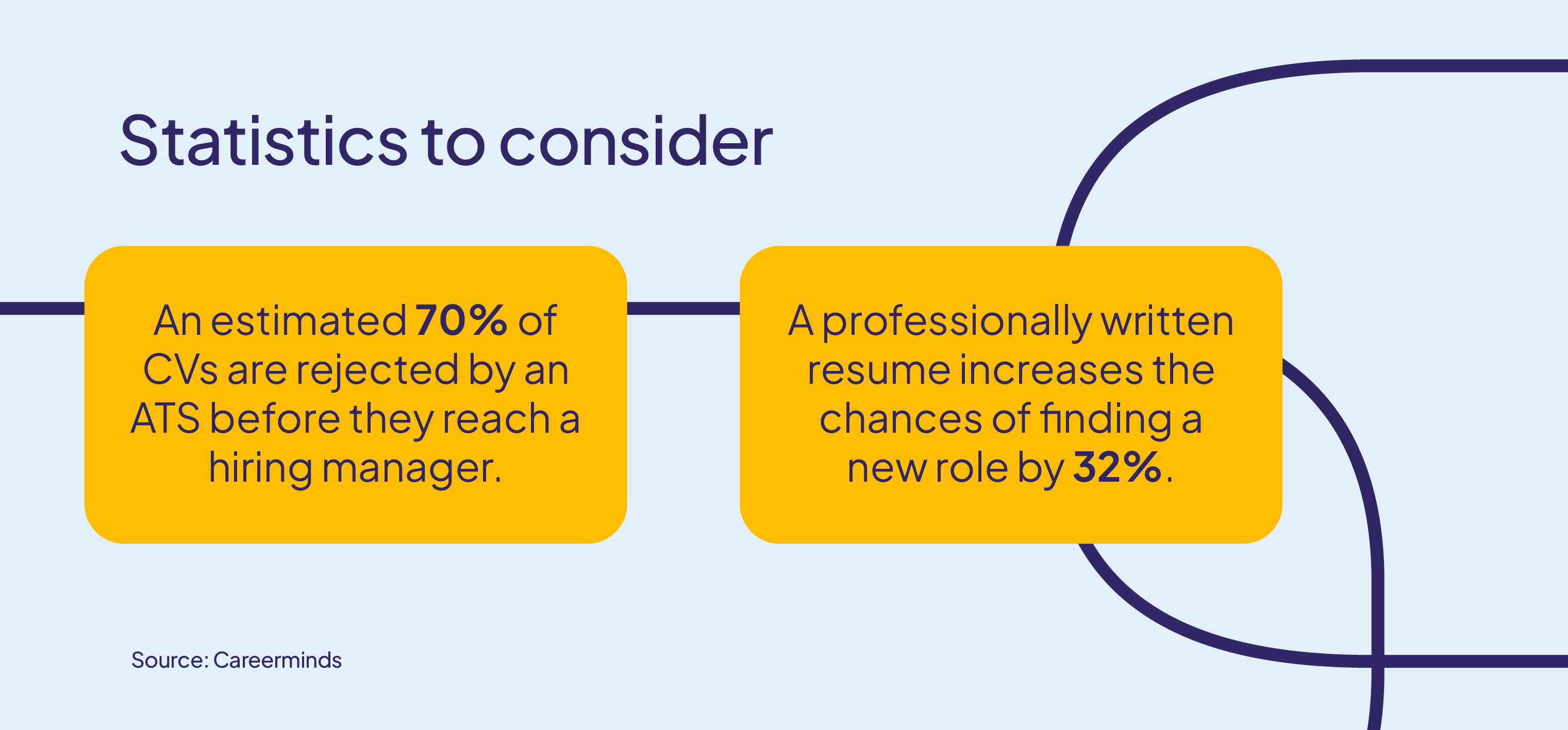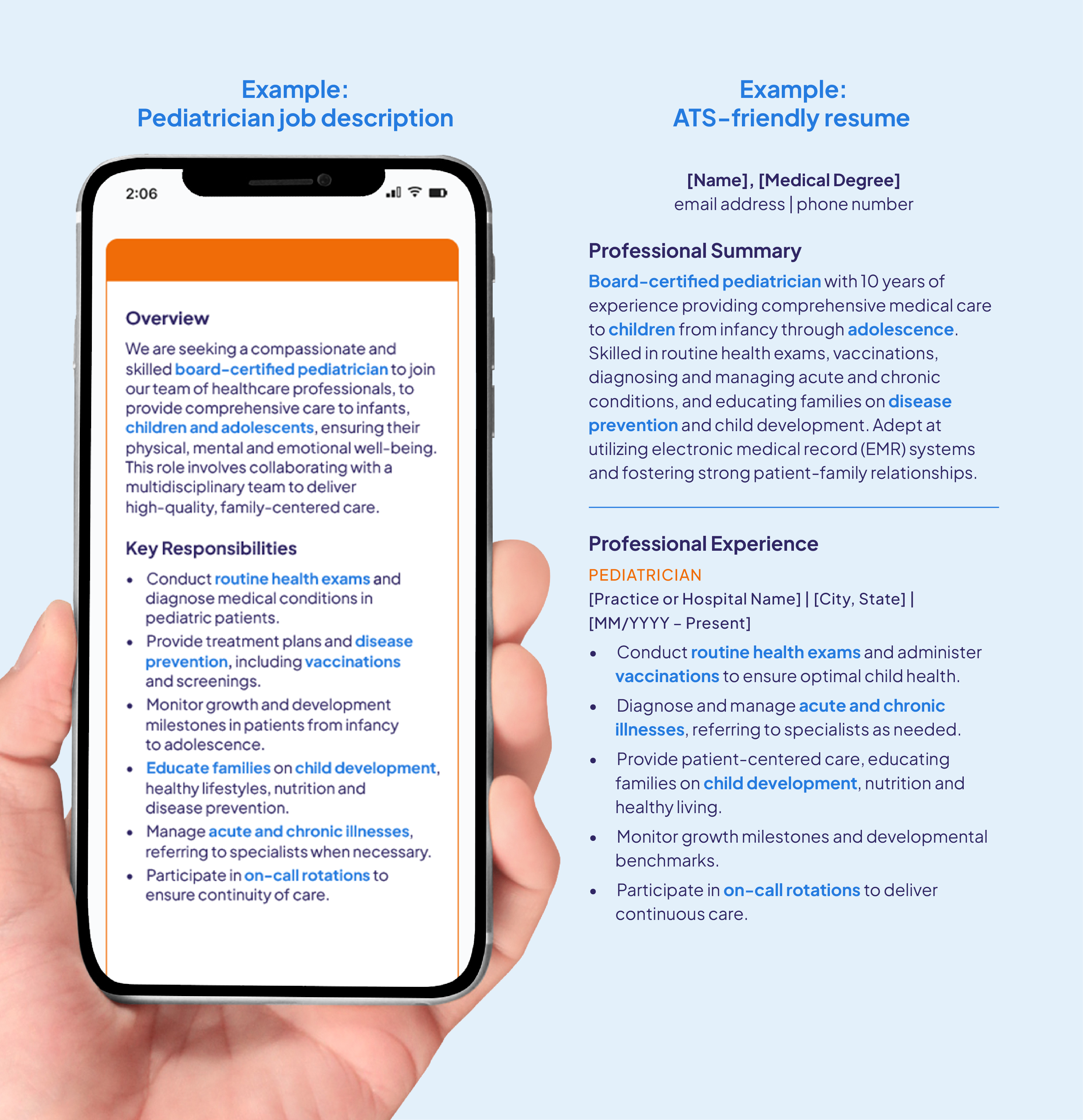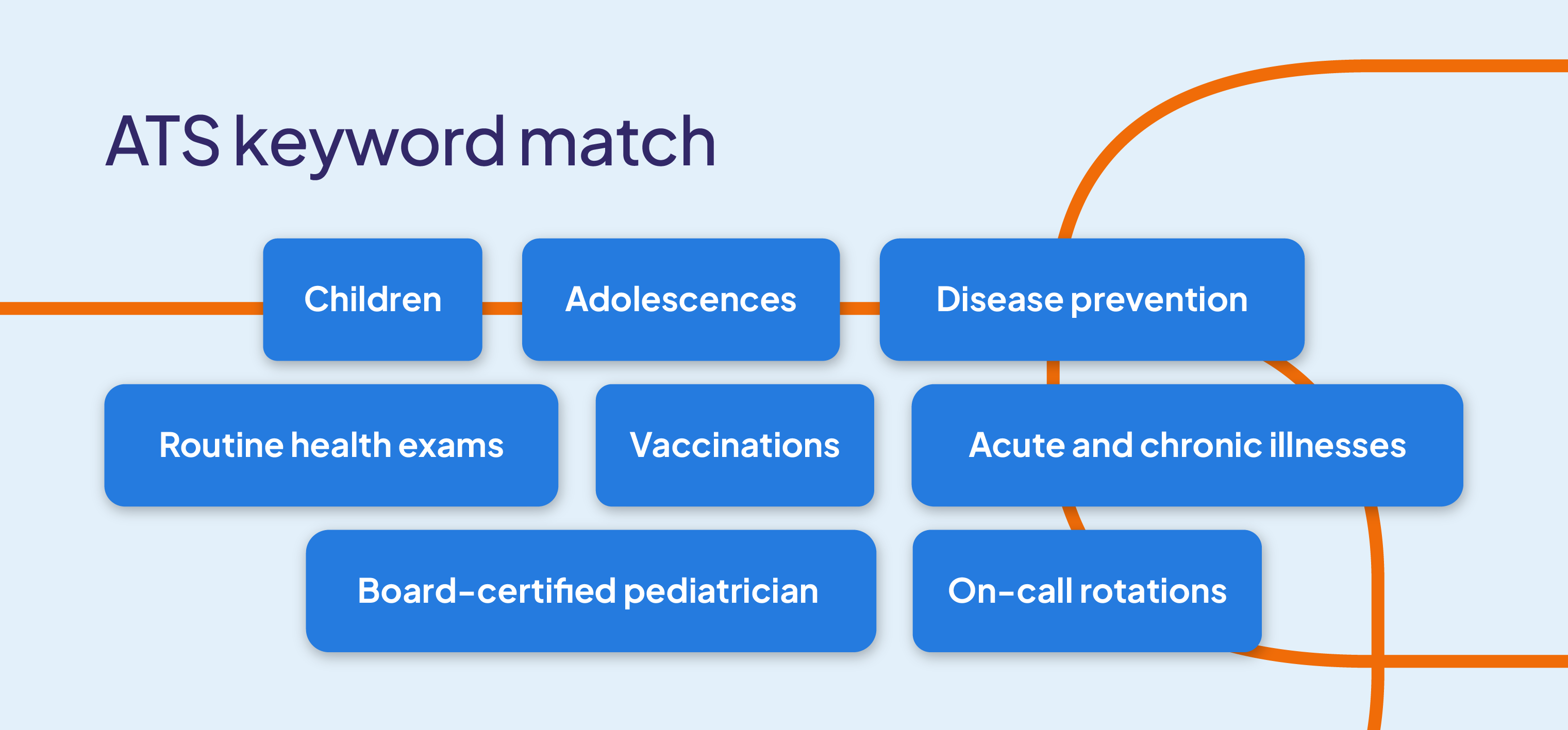Recent Posts
Most Popular
Optimize your medical CV for ATS

Summary
- In today’s highly competitive medical job market, creating a standout CV is essential for securing your desired position.
- The growing use of ATSs by employers means that CVs must pass through digital filters before reaching a recruiter.
- CVs must also appeal to recruiters and hiring managers.
- Learn how to craft a medical CV that highlights your qualifications and experience, while optimized for ATS filters.
For medical professionals, a curriculum vitae (CV) is more than just a list of qualifications — it's a marketing tool that represents your professional brand. With an increasing number of employers relying on applicant tracking systems (ATSs) to screen applications, creating a CV that’s both compelling to human recruiters and optimized for ATS software is essential.
According to a report by Jobscan, more than 98% of Fortune 500 companies use an ATS to screen candidates. In the healthcare sector, where attention to detail and precision are paramount, passing through these systems is often the first hurdle in your job search.
In this article, we’ll explore:
- Key elements of a successful medical CV.
- Strategies to optimize your CV for an ATS.
- Tips for making your application stand out to recruiters.
Understanding applicant tracking systems (ATS)
What is an ATS?
Employers use ATS software to streamline recruitment processes. By automatically filtering, organizing and ranking applications based on specific criteria, an ATS can quickly match keywords and phrases from job descriptions to submitted CVs. These systems can be specifically tailored to different industries, including healthcare, allowing employers to more easily manage the high volume of applications they receive for each job opening.
Why ATS compliance is critical
Given that most employers use an ATS to screen applications, it’s essential that your CV successfully passes through these systems. An ATS-friendly CV is designed with specific keywords, formatting and structure that align with the system's requirements. Failure to optimize your CV for an ATS could result in your application being filtered out before a human recruiter ever sees it.

Crafting an ATS-friendly CV
Using relevant keywords
To create an ATS-friendly CV, you must strategically use keywords. These usually come from the job description and should be naturally woven throughout your CV. Keywords might include specific skills, job titles or medical specialties relevant to the position.
Tips for identifying and using keywords
- Review the job description carefully.
- Highlight recurring terms and phrases.
- Include both long-form versions and abbreviations of keywords (e.g., emergency department and ED).
- Focus on hard skills (surgical procedures), not soft skills (team player).
Below, I’ve provided a side-by-side comparison of a sample job listing for a pediatrician and a portion of a resume that has been formatted using ATS keywords. You’ll see this resume is tailored to align closely with the provided job description by mirroring the key terms and phrases used, such as routine health exams, growth and development, vaccinations, and board certification. Repeating these keywords in meaningful contexts across the summary, professional experience and skills sections ensures high ATS compatibility. This alignment increases the likelihood of the resume passing initial ATS screenings, allowing it to reach human recruiters.


Formatting for ATS compatibility
While unique or colorful CV designs might impress a human recruiter, they can be problematic for these systems. Use these formatting tips to ensure your CV is ATS-friendly:
- Use standard fonts like Arial, Times New Roman or Calibri, which are some of the most common.
- Avoid tables, graphics or images because ATSs can’t always recognize these elements.
- Use bullet points for easy readability.
- Label sections clearly using headlines like Clinical Experience or Education.
- Submit your CV as a Word document (.docx) or in plain text format, as these are most compatible with ATSs.
Beware of common ATS traps
To prevent your CV from being immediately rejected by an ATS, avoid:
- Overusing abbreviations: While some are acceptable and commonly known, be sure to spell out key terms, especially on the first use.
- Complex layouts: Keep it simple and clean with readability in mind, so ATS can easily scan.
- Headers and footers: Important information should not be placed in headers or footers— an ATS may not read these sections.
Download our resume template for help with structuring your resume.
Tips for making your CV stand out to human recruiters
Once your CV passes through the ATS, it still needs to impress human recruiters. So, how can you make it stand out? Try:
- Tailoring your CV to the job by emphasizing relevant experience and skills that align with the job description.
- Highlighting achievements and impact by focusing on your wins and the success you’ve had in previous roles. Use quantifiable metrics where possible.
- Using action-oriented language like led, developed, managed or implemented to emphasize your influence in driving outcomes.
- Proofreading and quality control to avoid typos or grammatical errors that can undermine your professionalism. Consider having a colleague or mentor review it, as well. Tools like Grammarly can also help catch any errors you might have missed.
By implementing these tips, you will be one step closer to showing recruiters you’ve done your homework and are genuinely interested in the position. You can find more in-depth information about crafting the perfect CV at any point in your career.
Creating a medical CV that will get you noticed requires a careful balance between optimizing for an ATS and appealing to human recruiters. By understanding key components, crafting it with relevant keywords and ATS-friendly formatting, and ensuring it highlights your achievements and qualifications, you can increase your chances of landing your desired position. And don’t forget — your CV is a living document that should evolve with your career. Be sure to update it often so you’re always prepared to navigate the job search process.
Ready to begin your search? Visit DocCafe to view thousands of active opportunities, with more added daily. Or, if you have at least a year of experience, see what exciting locum assignments are available through our partners at Aya Locums.
Crafting a medical CV FAQs
What is an ATS, and why does it matter for my medical resume?
An applicant tracking system (ATS) is software used by employers to manage and screen job applications. Optimizing your medical resume for an ATS ensures it passes initial automated screenings and gets you one step closer to being noticed by hiring managers.
How can I use keywords effectively in my medical resume?
Incorporate specific terms, certifications, specialties and skills mentioned in the job description. Use exact phrasing, when possible, to align your resume with the role's requirements.
What format should I use for an ATS-friendly medical resume?
Stick to simple, clean formatting. Use standard fonts, avoid images or graphics, and organize content with clear section headings. Save your resume as a Word document or PDF, depending on the employer’s instructions.
How do I highlight my clinical experience for ATS scanning?
List job titles, facility names, dates, and specific responsibilities or achievements. Include measurable outcomes, when possible. Also, use action-orientated language like diagnosed, treated or managed.
Does an ATS recognize medical abbreviations and acronyms?
While many ATS systems can identify common medical abbreviations, it's wise to include both the full term and the acronym, to ensure broader keyword matching.
Are there services I can use to check my CV for ATS compatibility?
Yes! There are several free services, including JobScan and Resume Worded that you can use to help you make sure your CV is ATS-friendly.
All information, discussions and opinions contained within this blog or otherwise on the website or any linked materials (“the “Blog Content”) is for general informational purposes only. All Blog Content is based on the author's opinions and experiences and is not necessarily representative of our opinions as an organization. It should not be considered as tax/financial advice, legal advice, compliance advice, health advice or other professional advice and does not constitute the practice of any medical, nursing or other professional healthcare advice, diagnosis or treatment or provision of legal services. You should seek professional assistance for any concerns or issues. If you or any other person has a medical concern, you should consult with your healthcare provider or seek other professional medical treatment immediately. While we strive to provide accurate and up-to-date information, we make no warranties or representations regarding the completeness, reliability, or accuracy of the Blog Content. Your use of the Blog Content is solely at your own risk and we will not be liable for any damages or losses arising from the use of, or reliance on, any Blog Content.





 Mike York
Mike York
Comments